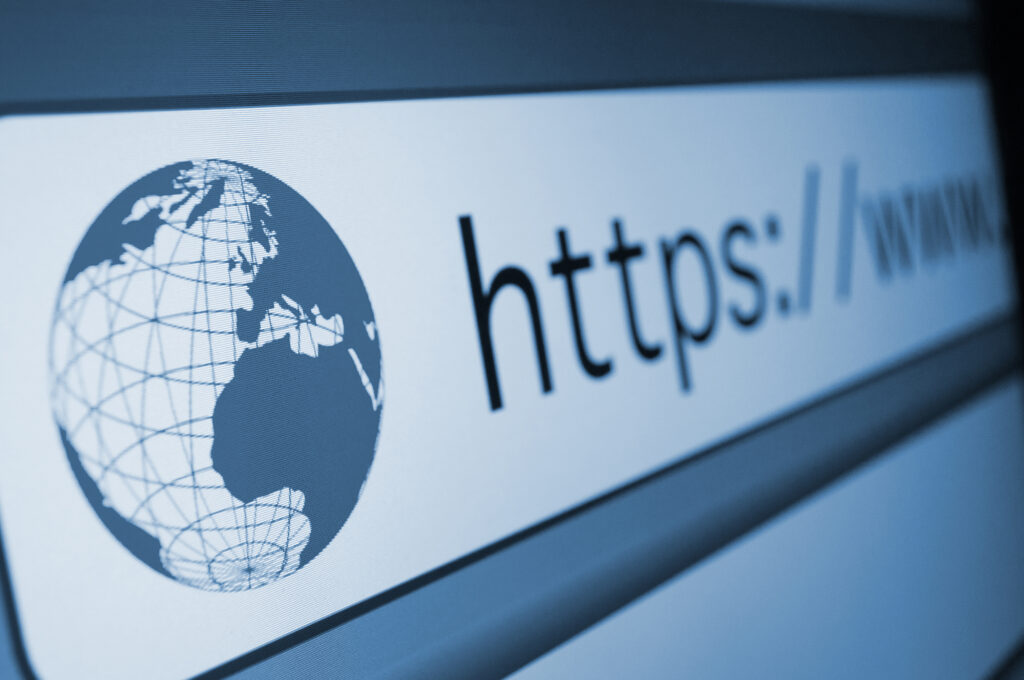The Power of FAQs: Why Your Business Website Needs a Frequently Asked Questions Page

In the fast-paced world of online business, providing quick and easy access to information is crucial for customer satisfaction and conversion. One of the most effective ways to achieve this is by incorporating a well-crafted Frequently Asked Questions (FAQs) page on your business website. An FAQs page serves as a valuable resource for both potential and existing customers, offering a wealth of benefits that can greatly enhance user experience and streamline your business operations. First and foremost, an FAQs page saves time for both your customers and your business. By addressing common queries and concerns upfront, you empower visitors to find answers to their questions independently, without the need to contact your customer support team. This self-service approach not only provides instant gratification to the customer but also reduces the workload on your staff, allowing them to focus on more complex issues that require personalized attention. Moreover, a comprehensive FAQs page can significantly improve your website’s search engine optimization (SEO). By featuring relevant keywords and phrases within the questions and answers, you increase the likelihood of your website appearing in search results when potential customers are seeking information related to your products or services. This increased visibility can drive more organic traffic to your site, attracting new customers and boosting your online presence. An FAQs page also serves as a powerful tool for building trust and credibility with your audience. By providing clear, concise, and accurate information about your offerings, policies, and processes, you demonstrate transparency and a commitment to customer service. This openness helps to alleviate any doubts or concerns that potential customers may have, making them more likely to engage with your business and make a purchase. Furthermore, an FAQs page can be an effective way to showcase your expertise and establish your business as an authority in your industry. By addressing common questions and providing valuable insights, you demonstrate your knowledge and understanding of your customers’ needs. This expertise can set you apart from competitors and foster a sense of confidence in your brand. When creating your FAQs page, it’s essential to organize the information in a clear and user-friendly manner. Categorize questions by topic, such as product information, shipping and returns, payment options, and account management. Use clear and concise language, avoiding jargon or technical terms that may confuse visitors. Additionally, consider incorporating a search function within your FAQs page to allow users to quickly find the information they need. To ensure the effectiveness of your FAQs page, regularly review and update the content based on customer feedback and new developments in your business. Encourage visitors to provide suggestions for additional questions they’d like to see addressed, and use this feedback to continuously improve the resource. In conclusion, an FAQs page is a valuable asset for any business website. By providing quick and easy access to important information, improving SEO, building trust, and showcasing expertise, an FAQs page can greatly enhance the user experience and support the growth of your business. Investing time and effort into creating a comprehensive and user-friendly FAQs page is a smart strategy for any business looking to improve customer satisfaction and drive online success.
The Importance of Owning Your Customer Lists: Why Small Businesses Shouldn’t Rely Solely on Third-Party Platforms

In today’s digital age, small businesses heavily rely on social media platforms like Facebook, X (formerly Twitter), and Instagram to connect with their customers and promote their products or services. While these platforms offer incredible reach and engagement opportunities, it’s crucial for small businesses to understand the importance of building and maintaining their own customer lists, including email, mailing, and phone lists. One of the primary reasons to prioritize building your own customer lists is the issue of control. When you rely solely on third-party platforms to reach your audience, you’re essentially handing over the keys to your customer relationships. These platforms can change their algorithms, policies, or even shut down entirely, leaving you without a direct line of communication to your valuable customers. By owning your customer lists, you maintain control over your ability to engage with your audience on your own terms. Moreover, having your own customer lists allows for more targeted and personalized marketing efforts. Social media platforms often limit the amount of information you can gather about your followers, making it challenging to create highly tailored marketing campaigns. With your own email, mailing, and phone lists, you can collect more detailed information about your customers’ preferences, purchase history, and demographics. This data empowers you to segment your audience and deliver relevant, personalized content that resonates with their specific needs and interests. Another advantage of owning your customer lists is the ability to foster deeper, long-lasting relationships with your customers. When you communicate with them directly through email, direct mail, or phone calls, you create a more intimate and personal connection. This direct communication channel allows you to provide value, offer exclusive promotions, and build trust over time. By nurturing these relationships, you increase customer loyalty and encourage repeat business, which is essential for the long-term success of any small business. Furthermore, relying solely on third-party platforms can be risky from a financial perspective. These platforms often charge businesses for advertising and boosting posts to reach a wider audience. While these investments can be effective, they can also quickly add up, putting a strain on a small business’s marketing budget. By building your own customer lists, you can reduce your reliance on paid advertising and instead focus on organic, cost-effective marketing strategies like email campaigns and targeted direct mail. To start building your own customer lists, consider implementing strategies such as offering incentives for customers to sign up for your email list, collecting contact information at events or in-store, and leveraging your website to capture visitor information through opt-in forms. Be transparent about how you intend to use their information and provide value in exchange for their trust. In conclusion, while social media platforms are powerful tools for small businesses to connect with their audience, it’s crucial not to rely on them exclusively. Building and maintaining your own customer lists through email, mailing, and phone lists gives you control, enables targeted marketing, fosters deeper relationships, and reduces financial risks. By prioritizing the development of your own customer lists, you’ll be better equipped to weather changes in the digital landscape and ensure the long-term success of your small business.
Freshen Up Your Online Presence: Tips for Website Spring Cleaning 🌱

Discover expert tips and strategies for revitalizing your online presence with our comprehensive guide to website spring cleaning. Learn how to optimize content, streamline navigation, enhance visual appeal, and more for a polished and engaging website experience.
Demystifying Segmentation in Email Marketing: A Guide to Personalized Campaigns

Email remains a cornerstone for businesses to engage with their audience effectively in the vast digital marketing landscape. However, the days of sending generic, one-size-fits-all email blasts are long gone. Today, the key to success lies in segmentation – a powerful strategy that allows marketers to tailor their messages to specific groups within their email lists. Let’s delve into the world of segmentation and explore how it can elevate your email marketing efforts. Understanding Segmentation Segmentation involves dividing your email list into smaller, more targeted groups based on specific criteria such as demographics, purchase history, behavior, or engagement levels. By doing so, marketers can create highly personalized and relevant content that resonates with each segment, increasing open rates, click-through rates, and conversions. Why Segmentation Matters Types of Segmentation Implementing Segmentation Conclusion In today’s competitive landscape, generic email blasts are no longer sufficient to cut through the noise and capture your audience’s attention. Segmentation offers a powerful solution, allowing you to deliver personalized and relevant content that resonates with each segment of your email list. By understanding your audience, leveraging data-driven insights, and crafting targeted campaigns, you can maximize engagement, drive conversions, and cultivate lasting relationships with your subscribers. Embrace segmentation and unlock the full potential of your email marketing efforts.
Maximizing Website Traffic with Irresistible Email Offers

In digital marketing, email remains a powerful tool for businesses to connect with their audience. It allows for personalized communication and targeted messaging and, when used strategically, can be a potent driver of website traffic. One of the most effective ways to leverage email marketing for this purpose is by using offers that grab attention and entice recipients to click through to your website. In this blog post, we’ll explore how to use offers in email marketing to drive website traffic and maximize your marketing efforts. 1. Understanding the Power of Offers Offers, such as discounts, promotions, or exclusive deals, are powerful tools in email marketing because they create a sense of urgency and exclusivity. When recipients feel like getting a special deal, they’re more likely to take action and visit your website to learn more or purchase. Offers can also help you stand out in a crowded inbox, increasing the likelihood of your email opening and engaging. 2. Crafting Compelling Offers To drive website traffic effectively, your offers must be compelling and relevant to your audience. Consider what would motivate your subscribers to click through to your website. Is it a discount on a popular product? A limited-time promotion? An exclusive preview of new products or services? Tailor your offers to meet the needs and interests of your audience to maximize their impact. 3. Creating a Sense of Urgency Urgency is a critical component of a successful offer. Use language that conveys a limited-time opportunity to create a sense of urgency and encourage recipients to act quickly. Phrases like “limited time offer,” “act now,” or “while supplies last” can be effective in driving clicks and traffic to your website. 4. Personalization and Segmentation Personalization and segmentation are essential for maximizing the effectiveness of your email offers. Use data and insights about your subscribers to tailor your offers to their preferences and behaviors. Segment your email list based on factors such as past purchase history, engagement with previous emails, or demographic information to ensure your offers are relevant and compelling to each segment. 5. Clear Call to Action (CTA) Your email should have a clear and prominent call to action (CTA) that directs recipients to your website. Use action-oriented language that tells recipients precisely what you want them to do, such as “Shop Now,” “Learn More,” or “Claim Your Discount.” Ensure your CTA stands out visually and is easy to click on, especially on mobile devices. 6. Tracking and Analyzing Results To understand the impact of your email offers on driving website traffic, track and analyze key metrics such as open rates, click-through rates, and website traffic. Use this data to refine your email marketing strategy and optimize your offers for better results over time. In conclusion, offers are a powerful tool in email marketing for driving website traffic and engaging your audience. By crafting compelling offers, creating a sense of urgency, personalizing your emails, and analyzing your results, you can maximize the effectiveness of your email marketing efforts and drive more traffic to your website.
A Beginner’s Guide to Email Newsletters: Building Connections, Sharing Stories, and Engaging Audiences

In a world inundated with tweets, posts, snaps, and stories, there’s something refreshingly personal about an email newsletter. It’s like receiving a letter from a friend in your inbox, filled with curated content, insights, and updates. As both a communication tool and a marketing strategy, email newsletters have proven to be incredibly effective in building connections, sharing stories, and engaging audiences. In this beginner’s guide, we’ll explore email newsletters’ what, why, and how and how they can benefit individuals and businesses. What is an Email Newsletter? Simply put, an email newsletter is a regular email sent to subscribers who have opted in to receive updates from you or your organization. It typically contains news, articles, promotions, announcements, and personal messages. Newsletters can vary in frequency, from daily digests to weekly roundups or monthly updates, depending on the goals and resources of the sender. Why Start an Email Newsletter? How to Start an Email Newsletter Conclusion Email newsletters are a powerful tool for connecting with your audience, sharing your story, and achieving your personal or professional goals. By delivering valuable content directly to subscribers’ inboxes, you can build relationships, drive engagement, and, ultimately, make an impact. So why wait? Start crafting your newsletter today and watch your audience grow and thrive.
Ensuring Longevity: Strategies for Maximizing Your Website’s Lifespan

In the ever-evolving digital landscape, the lifespan of a website can vary greatly. Factors like technological advancements, changing consumer preferences, and algorithm updates constantly shape the online environment. However, there are strategies you can employ to prolong your website’s existence and maintain a strong online presence. Here are some tips to help maximize your website’s lifespan: By implementing these strategies and staying proactive in managing your website, you can maximize its lifespan and ensure a strong online presence for years to come. Remember, the digital landscape is constantly evolving, so staying informed and agile is key to staying ahead of the competition.
Maximizing Conversions: 7 Elements of Education Web Design

In the digital age, where information is at our fingertips, educational institutions must adapt to the ever-evolving landscape of online presence. Whether you’re a university, an online course provider, or a tutoring service, your website is the digital front door to your educational offerings. In this blog post, we’ll explore seven key elements of education web design that can significantly influence conversions, helping you attract and retain students effectively. 1. Clear Navigation Navigation is the backbone of any website, and in education web design, it’s crucial to provide a clear and intuitive navigation structure. Prospective students should easily find the information they’re looking for, whether it’s about programs, admissions, faculty, or campus life. Use dropdown menus, breadcrumb trails, and search functionality to enhance navigation efficiency. 2. Compelling Visuals Humans are visual creatures, and compelling visuals can significantly enhance user engagement. Use high-quality images and videos to showcase your campus, classrooms, and students in action. Infographics and charts can help simplify complex information, such as program structures or academic statistics. Ensure that your visuals reflect the diversity and inclusivity of your educational community. 3. Responsive Design With the increasing use of mobile devices, responsive design is no longer optional—it’s a necessity. Your website must adapt seamlessly to various screen sizes and devices, providing an optimal viewing experience for users on smartphones, tablets, and desktops alike. A mobile-friendly website improves user satisfaction and positively impacts your search engine rankings. 4. Persuasive Copywriting Compelling copywriting is essential for conveying your institution’s unique value proposition and persuading visitors to take action. Craft persuasive headlines, concise yet informative descriptions, and compelling calls-to-action (CTAs) that encourage users to explore further or submit an application. Use language that resonates with your target audience and addresses their specific needs and aspirations. 5. Social Proof Testimonials, reviews, and success stories from current students, alumni, and faculty can build trust and credibility with prospective students. Incorporate social proof strategically throughout your website, showcasing real-life experiences and achievements. Additionally, display accreditation badges, rankings, and affiliations further to validate the quality and reputation of your institution. 6. User-Friendly Forms Whether it’s a contact form, an application form, or a registration form, make sure it’s user-friendly and easy to complete. Minimize the number of required fields and provide clear instructions to streamline the process. Consider implementing auto-fill features, progress indicators, and error messages to enhance your forms’ usability and reduce user friction. 7. Accessibility Accessibility should be a top priority in education web design, ensuring that your website is usable by individuals of all abilities. Follow web accessibility guidelines such as WCAG (Web Content Accessibility Guidelines) to make your content perceivable, operable, and understandable for everyone. Provide alternative text for images, video captions, and keyboard navigation options to accommodate users with disabilities. In conclusion, effective education web design goes beyond aesthetics—it’s about creating an engaging and accessible online experience that drives conversions and fosters meaningful connections with your audience. By incorporating these seven elements into your website strategy, you can optimize the user experience and attract more students to your educational institution. Remember, your website is a powerful tool for showcasing your institution’s mission, values, and offerings to the world. Invest in thoughtful design and functionality to leave a lasting impression on visitors and inspire them to join your learning community.
Understanding the Vital Differences Between HTTP and HTTPS

In the expansive landscape of the internet, two protocols reign supreme: HTTP and HTTPS. While both facilitate communication between web servers and browsers, they possess crucial disparities that profoundly impact user security and data integrity. In this article, we’ll delve into the disparities between HTTP and HTTPS and elucidate why transitioning to HTTPS is imperative for modern web practices. HTTP: The Foundation of Web Communication HTTP, or Hypertext Transfer Protocol, is the backbone of communication on the World Wide Web. It facilitates data transfer between a web server and a browser, allowing users to access websites, view content, and interact with web applications. However, HTTP operates on an inherently insecure framework, making it susceptible to various security vulnerabilities. One of the primary drawbacks of HTTP is its lack of encryption. When data is transmitted over HTTP, it travels in plaintext, meaning it’s easily accessible to anyone who can intercept it. This vulnerability exposes users to risks such as eavesdropping, data tampering, and man-in-the-middle attacks. Additionally, HTTP connections offer no verification of server authenticity, leaving users vulnerable to phishing scams and malicious impersonation. HTTPS: Securing Web Communication with Encryption HTTPS, or Hypertext Transfer Protocol Secure, addresses the security deficiencies inherent in HTTP by incorporating encryption and authentication mechanisms. HTTPS utilizes SSL/TLS (Secure Sockets Layer/Transport Layer Security) protocols to encrypt data transmitted between the server and the client, rendering it unreadable to unauthorized parties. This encryption ensures the confidentiality and integrity of sensitive information, including login credentials, personal details, and financial transactions. Moreover, HTTPS employs digital certificates to authenticate the server’s identity, providing users with assurance regarding the legitimacy of the website they’re accessing. These certificates are issued by trusted Certificate Authorities (CAs) and serve as cryptographic proof of the server’s authenticity. By validating the server’s identity, HTTPS mitigates the risk of phishing attacks and safeguards users against fraudulent websites masquerading as legitimate entities. Why Transition to HTTPS? The transition from HTTP to HTTPS is imperative for several reasons, including enhanced security and privacy. By encrypting data in transit, HTTPS fortifies the confidentiality of user information, safeguarding it against interception and exploitation by malicious actors. This is especially critical for websites that handle sensitive data, such as e-commerce platforms, banking portals, and online forms. Furthermore, HTTPS is essential for maintaining trust and credibility in the eyes of users and search engines alike. In recent years, major web browsers and search engines have taken proactive measures to promote HTTPS adoption by labeling non-secure sites as such and prioritizing HTTPS-enabled websites in search results. Failing to implement HTTPS can lead to diminished user trust, decreased visibility, and potential penalties in terms of search engine rankings. In conclusion, the disparities between HTTP and HTTPS underscore the importance of adopting secure web protocols in today’s digital landscape. While HTTP may suffice for basic web communication, the security risks it poses are untenable in an era plagued by cyber threats and privacy breaches. By transitioning to HTTPS, website owners can fortify their defenses, protect user data, and uphold the integrity of their online presence. As the internet continues to evolve, embracing HTTPS isn’t just a recommendation – ensuring a safer and more secure browsing experience for all is necessary.
The Power of Price Transparency: Building Trust and Strong Client Relationships

In today’s competitive marketplace, businesses constantly seek ways to differentiate themselves and foster stronger client relationships. One often overlooked yet powerful tool in achieving this is price transparency. Being open and honest about pricing builds trust with clients and lays the foundation for long-lasting, mutually beneficial relationships. So, what exactly is price transparency, and why does it matter? Price transparency refers to the practice of openly disclosing the cost of goods or services to customers. This transparency extends beyond just listing prices; it provides clear explanations of pricing structures, potential additional fees, and any factors affecting the final price. It’s about being upfront and honest with clients about what they can expect to pay. One of the primary benefits of price transparency is the trust it builds with clients. When customers know exactly what they’re paying for and understand the value they’re receiving in return, they’re more likely to feel confident in their decision to do business with a company. This transparency fosters a sense of trust and credibility, which are essential components of any successful client relationship. Moreover, price transparency demonstrates integrity and a commitment to fairness. Clients appreciate companies that are transparent about their pricing because it shows that the business values honesty and respects its customers. This can increase customer loyalty and positive word-of-mouth referrals, as satisfied clients are more likely to recommend transparent businesses to others. In addition to building trust, price transparency also helps to prevent misunderstandings and disputes down the line. By clearly outlining pricing structures and any potential additional costs upfront, businesses can avoid surprises for clients and ensure that both parties are on the same page from the outset. This transparency fosters open communication and reduces the likelihood of conflicts arising over billing issues. Furthermore, price transparency encourages clients to make more informed purchase decisions. When customers can access clear pricing information, they can evaluate their options more effectively and choose the products or services that best meet their needs and budget. This leads to a more satisfying experience for clients and increases the likelihood of repeat business in the future. So, how can businesses implement price transparency effectively? First and foremost, companies should strive to make pricing information readily accessible and easy to understand. This may involve displaying prices prominently on their website, providing detailed pricing breakdowns in proposals or contracts, and offering explanations of any factors that may influence pricing. Additionally, businesses should be proactive in communicating with clients about pricing. This means being upfront about any potential changes to pricing or fees and being responsive to clients’ questions or concerns about pricing. By prioritizing transparency and open communication, companies can demonstrate their commitment to their clients’ satisfaction and build stronger, more trusting relationships as a result. In conclusion, price transparency is a powerful tool for building trust and fostering stronger client relationships. Businesses can demonstrate integrity, prevent misunderstandings, and empower clients to make informed decisions by being open and honest about pricing. Ultimately, prioritizing price transparency benefits clients and contributes to the long-term success and sustainability of businesses in today’s competitive marketplace.
